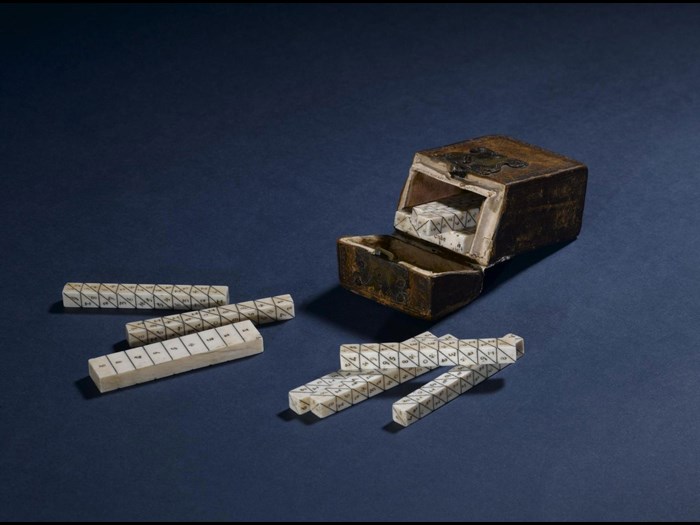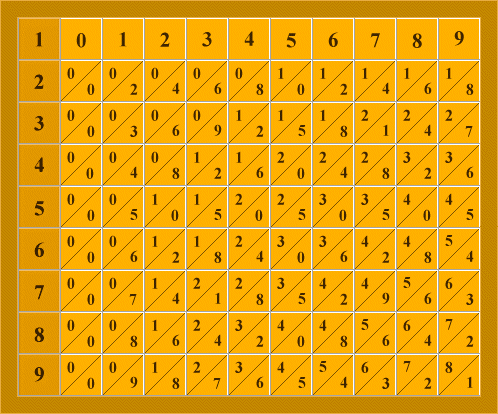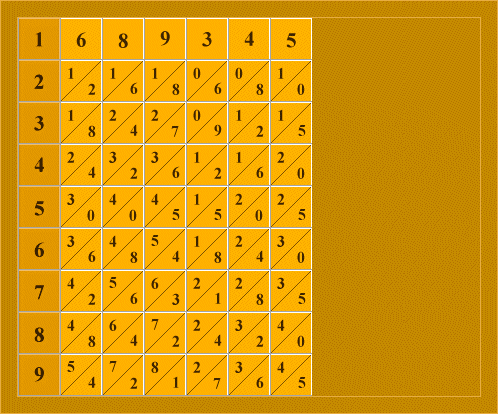| Author: | |
| Website: | |
| Page title: | |
| URL: | |
| Published: | |
| Last revised: | |
| Accessed: |
The Scottish mathematician John Napier (1550-1617) is primarily known for his discovery of logarithms, which led to the development of, among other things, the slide rule. He is however also frequently remembered for his invention, in 1617, of a calculating device that could be used to simplify the multiplication and division of large numbers. Napier's device, which came to be known as "Napier's Bones", consists of a set of bone-like rods, usually made of wood or ivory, that have a series of numbers engraved on all four sides as shown below.

A set of Napier's Bones in ivory, in a small leather case, c. 1650
Image: National Museum of Scotland
The rods are usually mounted on a baseboard consisting of a wooden frame with a raised edge that serves to hold the rods in place while a calculation is being made. The illustration below shows a complete set of rods in their frame. The left-most column holds the rod that displays the numbers 1 to 9, in ascending order, from top to bottom (this rod is sometimes referred to as the ruler, and is often incorporated into the baseboard itself as a fixed column).

Napier's Bones mounted in a baseboard
The remaining rods can be arranged in any order, depending on the calculation being carried out. Each side of each rod is divided into nine squares, the top-most of which holds a single digit number. Each of the squares below it holds a multiple of that number, starting with double, then triple, then quadruple, and so on. The number shown in the bottom square has nine times the value of the number in the top-most square.
Note that all of the multiples are shown as two-digit numbers. Leading zeros are used where necessary to facilitate this. The first digit of each number appears in the top left-hand corner of its square, and the second digit appears in the bottom right-hand corner. The two digits are separated by a diagonal line that divides the square into two triangles, forming diagonal number pairings between adjacent squares.
Napier described various devices to be used for simplifying arithmetic calculations, including the rods already dubbed "Napier's Bones", in a publication entitled Rabdologiæ, written in Latin and published in Edinburgh in 1617 (the year of Napier's death). In order to demonstrate how Napier's device is used, let's work through an example by finding the product of two relatively large numbers. Suppose we wish to find the value of the following expression:
689,345 x 7,394
Now, I know that there are people who can do this kind of multiplication in their heads, but they are far and few between (and I'm certainly not one of them). Most of us, when faced with a problem of this nature, would reach for a calculator or, in the absence of a calculator, grab a pencil and a piece of paper and work out the answer by hand (assuming we remember how to do long multiplication!).
So how do we perform a calculation like this using Napier's Bones? The first thing we do is to select a set of rods whose topmost squares contain all of the digits in our first multiplicand (6, 8, 9, 3, 4 and 5), and place them into the frame adjacent to the ruler. They should appear in the correct order so that they represent the number 689,345, as shown in the following illustration:

Napier's Bones representing the number 689,345
Now we read off four values – one for each of the digits in our second multiplicand (7, 3, 9 and 4). We'll start with the least significant digit, which is 4. The order in which you proceed is not really important, as long as you keep track of how many zeros you need to add to the result for each row (see below).
Proceed by writing down the sum of each diagonal pair of digits in row four, from left to right (the first and last digits in each row are not diagonally paired with any other digits, so just write them down as they are). You should get the following result:
2,757,380
This result is constructed as follows:
2, 4+3, 2+3, 6+1, 2+1, 6+2, 0
Now repeat the procedure for the next least significant digit (9), and add a zero to the end of the resulting number. This time, you will encounter several instances where the sum of a diagonal pairing is greater than ten. Wherever this occurs, subtract ten from the result and carry one to the left. You should get the following result:
62,041,050
Repeat the procedure for the remaining two digits (3 and 7), adding two and three additional zeros, respectively, to the results. You should get the following:
206,803,500
and
4,825,415,000
As you may have guessed, we get the answer we are seeking by adding the four intermediate results together:
+ 0,002,757,380
+ 0,062,041,050
+ 0,206,803,500
+ 4,825,415,000
= 5,097,016,930
= 1,012,110,100
If you check the result with a calculator, you will see that the answer (5,097,016,930) is correct. When you think about it, what we have done here is not all that different from the long multiplication we all learned in school. The main difference is that the task of finding the intermediate results to be added together should be significantly easier, once you get comfortable with using Napier's Bones.
An experienced user can also find the quotient of two numbers using Napier's Bones, although the procedure is somewhat different to the procedure we used for multiplication. It does, nevertheless, eliminate much of the hard work involved in manually carrying out long division. A later refinement of Napier's Bones made it possible to extract the square root of a number by utilising a special three-column rod specifically designed for that purpose in place of the standard ruler.
In the context of computing, the real significance of Napier's Bones lies in the fact that they demonstrate the potential for mechanical devices to exploit the deeper relationships that exist between numbers in order to simplify, and to some extent automate, the process of carrying out complex calculations. We're not finished with Napier yet, however. The next article in this series looks at the slide rule, another mechanical computing device that was based on Napier's discovery of logarithms.